Datura Reflections
By Gideon, HSM Team Writer
Steady, high pitched tones whisper from a nearby heart monitor rousing you from your unconscious state. The medical attendant next to the gurney idly attends to nearby equipment oblivious to your abrupt cognizance. Shadows wash over the blanket draped over you as the ambulance presumably makes its way to the hospital. As you move your hand the blankets roll away from your torso, revealing the ecg electrodes attached to your chest. Clumsily, you gain your composure and with a few small innocuous gestures you are thrust into a world not entirely like our own.
A game from the development studio whose only other release on the PSN is Linger in Shadows, a surreal artistic explorative adventure, brings with it lofty and particular expectations. With Linger in Shadows, the term “adventure” is used quite loosely, since the entire experience is more of a demoscene, which aims to achieve artistic expression through the use of real time rendering capabilities and showcase the capabilities of current technology.
Plastic, a demoscene development group, has taken the next step in their continual evolution of expression through demoscene and game creation with Datura. While the entirety of the experience is rather short, it is one that is reminiscent of past games as well as forward-looking to the possible future of game design. While not quite the artistic wonderment of recent PSN gems such as Journey, Datura manages to stand out against other indie efforts to offer something uniquely PlayStation.
When I first caught wind of Datura, all I knew is that it was from the same studio that made Linger in Shadows, which was enough to convince me to pick it up as soon as it was released. I kept away from previews and reviews and have, to this day, only relied on my own experience to cultivate an opinion of this indie game available exclusively on the PSN. My blinders were so keenly affixed I was surprised and intrigued when I first booted up the newly installed program to find the PlayStation Move warning screens displayed before me. I eagerly vaulted from my sofa to fetch both move controllers ready for whatever Plastic had in store.
It didn’t take long for me to realize that Datura only requires the Move Motion controller and not the Navigation controller. Admittedly, I let a slight sigh escape as I set the Navigation controller aside, feeling that there would be control possibilities that the game would be missing out on.
So I set forth navigating the world of Datura in first person, presumably through the same eyes that opened on the gurney in the back of the ambulance only a moment before. The same disembodied hand floated before me, matching the general movements and gestures I made with my controller clutching paw. The game gave me but a few gentle nudges along the path of Datura’s story and then let loose my sense of exploration. The game, through on screen prompts, taught me how to grip doorknobs, smash glass and fondle trees as I made my way around the autumn landscape that was lain before me.
With the mystical hand of fate as my obedient companion I contorted my own hand in uncomfortable efforts to try to simultaneously look at, maneuver through and interact with the world around me. While the release of another title supporting the PlayStation Move was welcome, I couldn’t help but feel the execution left something to be desired. As I waved my Motion controller to and fro to move about the world, pressing the Move button while frantically tapping the trigger to get to a light jog, I couldn’t help but glance down at the Navigation controller lying on the ottoman in front of me. With its inviting analogue stick and directional pad, it would have been an ideal solution to the navigation awkwardness that Datura hosts. It’s even called the navigation controller! How did Plastic miss that one?
While the controls do quickly become manageable, even enjoyable at times, they never become second nature. I had to purposefully and intentionally move the Motion controller to manipulate the unsettling bobbing hand all the way until the very last sequence of the game. Through an unfortunate but appreciated design decision, the player is never left to their own devices and is treated to on screen prompts for the entirety of the experience.
The control of the disembodied hand lead to one other unusual immersion fracture point. There were times, during the course of the adventure, the character’s other hand was brought in to assist in grabbing, shoving or pulling objects in the world. This hand was in no way controlled by the player and, oddly enough, was attached to a fully rendered arm. While the inclusion of the arm may have been to cue the player into their inability to control the second hand, it always detached me from what was going on in the actual game. The game teaches us that it is “normal” to have this loose hand waving about then presents us with the abnormality of reality. The addition of the arm simply drew my attention away from the game and settled it squarely onto the spam-steak stump of the armless hand that was supposed to be mine. This detachment, however, couldn’t pull me away from being immersed within the world of Datura for long.
Not often does a game’s atmospheric fidelity and graphical prowess take my breath away. Even less often does that feeling of awe linger throughout the length of play. Each time I’ve loaded up Datura I am slightly surprised at how crisp this game looks. Even the leaves on the ground are individually rendered. The art direction, even though the quests take you in and out of various realities, memories and/or visions, stays cohesive throughout the experience. The music and audio of the game do an adequate job of immersing the player in the experience, however par-for-the-course they tended to be. This isn’t to say the sound is ill-fitted to Datura, it’s just that the expectations for music and effects has grown just as the expectations of graphics have and Delivers audio just enough to be good enough for the experience. While playing there was one game that repeatedly came to mind as I made my way through the world, the PSone classic Myst (available now on PSN).
When Myst was first released people were in awe of its graphics but I, for one, very much wished it was a fully 3d game in which the player was given the freedom to roam. Datura manages to capture the same out-of-place atmospheric tension and wonderment as Myst but does so in an immersive, fully exploreable world. This doesn’t mean that the world is vast by any means, quite the opposite actually. The navigable area is much smaller than almost any level in any first person shooter, yet Plastic manages to give the player the sensation that they are in the middle of a living, breathing world. Never did I feel cramped or trapped by the size of the world of Datura. However, there was one instance of rogue exploration that resulted in my character being shamefully wedged between two large boulders behind a fountain. The resolution to my wanderlust indiscretion was to restart the game, since I made the mistake of not-yet saving.
Restarting gave me a chance to reconsider some of the decisions I had made in a few of the quests, which was the only reason I did not begrudge the game-testing oversite. During each quest Datura provides the player with ‘either-or’ decision that is usually made quickly, requiring players to rely on knee jerk reaction the first time they play through. And yes, most gamers will play through Datura multiple times. Since each decision made during quests is given a black or white marker on the map, once the quest is complete, many gamers will feel compelled to play through multiple times. A second play-through is enough to see all the possible decisions that can be made, but some players might be compelled to complete white and black run through as well. Each decision made slightly alters the ending in an entirely inconsequential, but interesting, way.
There is also a feature included in Datura that allows the player to switch the handedness of the character, presumably so that players can control the game with their predominant hand. Instead of rendering a left hand for the player, Plastic chose to mirror the world of Datura so the entire experience becomes altered. This design choice could have been made to save time, money and resources or it could have been a conscious decision to give the player an alternate form of play. Either way, every Datura player should experience the world with both hands. Seeing the not-quite familiar world of Datura horizontally flipped is quite a treat. The combination of quest choices, varied endings and an alternate form of play gives Datura a decent amount of re-playability, which is rare for such a short game.
It’s not surprising that this second outing of the demoscene group, Plastic, is as every bit interesting as their first. Datura captures the imagination in an awkward but appreciated way. The narrative doesn’t leave much room for interpretation as it seems quite obvious what is going on in the world of Datura. Poetic and interpersonal it is not, but beautifully created and solidly presented it is. Not only is the experience enjoyable, it’s memorable. While I truly wish the game could have been a longer epic with more robust controls, it was nice to see what Plastic had to say with the release of Datura. I am truly looking forward to whatever Plastic has in store for us in the future.


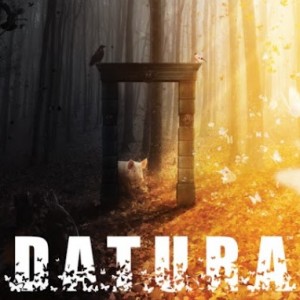
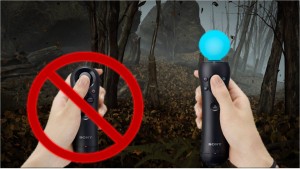
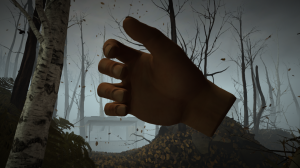
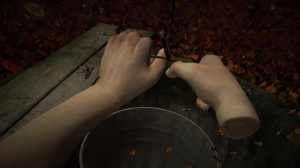
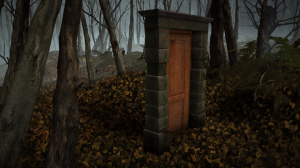
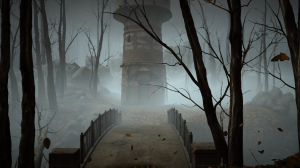
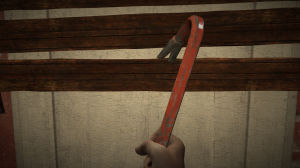
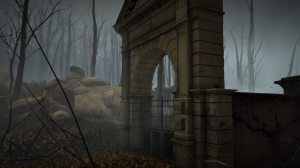





Interesting, I have been contemplating getting this game. Almost did but the 4am beta really convinced me to get that instead. I may just have to pick this up, I would love to see a game take the move element to explore an entire open world, a game that isn’t an FPS that is. Sometimes it’s just nice to explore a rich environment without having to dodge bullets, or look for something to shoot. Nice review Gideon.
I totally agree Bonzo. The move is the reason I am going to get The Walking Dead game on PS3 and not PC… Move compatibility. Of course, I was burned on Back to the Future because PS+ got it free… and I’m a PS Plus member… but I paid for my copy of Back to the Future.
Way to teach a paying gamer NOT to buy games Sony. I should have gotten a refund.
But about Datura! While not perfect… it’s a good experience. If you enjoy games that are ‘experimental’ Then I suspect you’ll enjoy Datura.